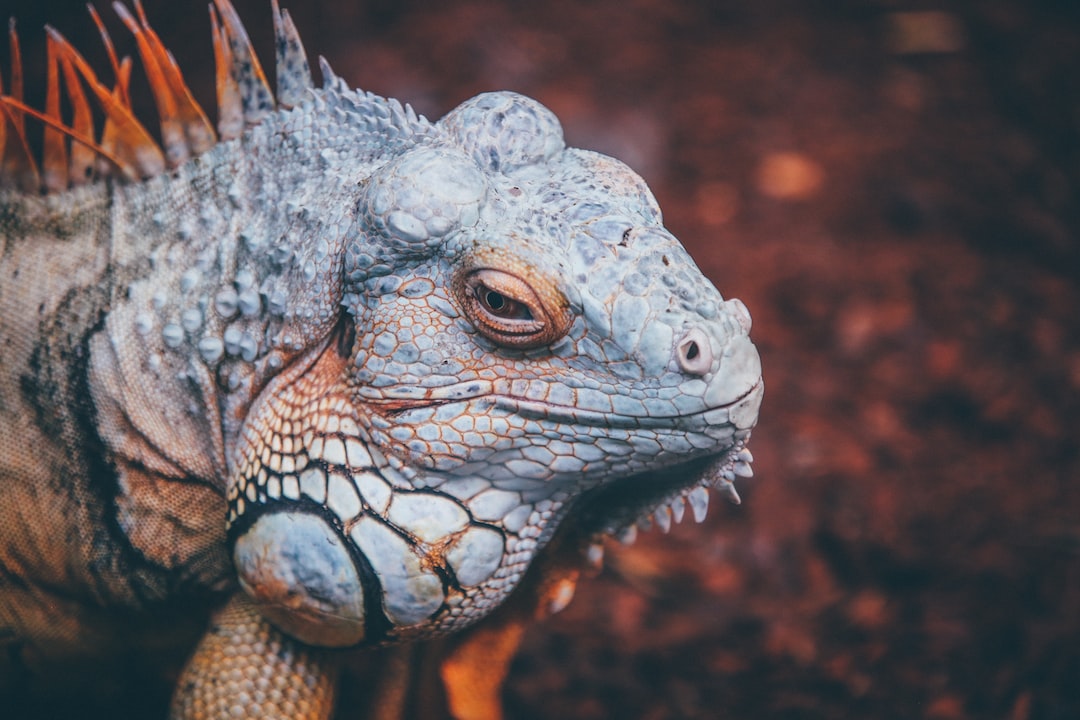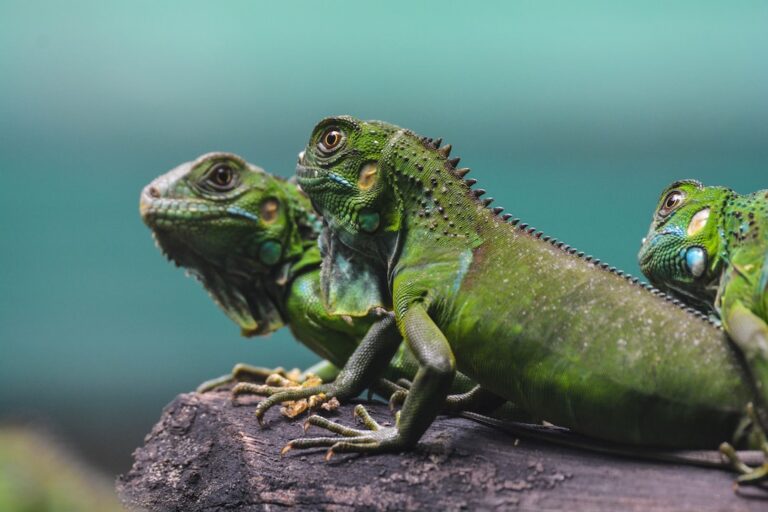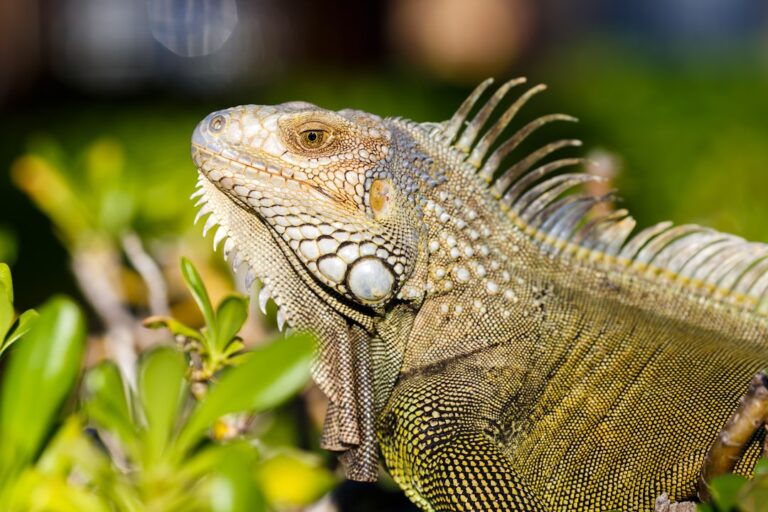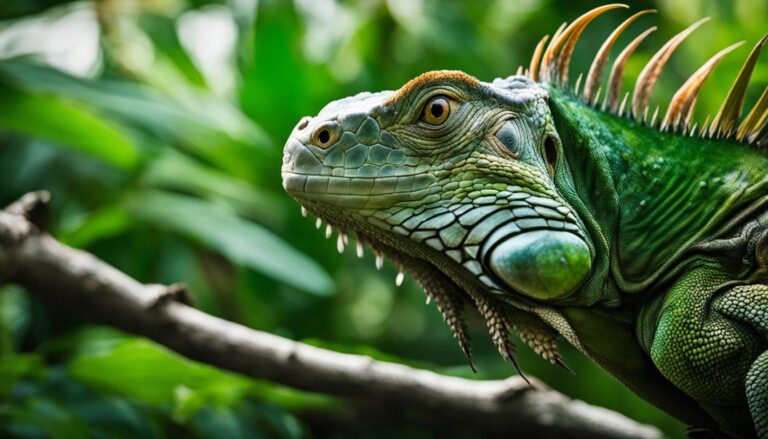Do Iguanas Live Underground?
Iguanas are a group of reptiles that belong to the family Iguanidae. They are known for their distinctive appearance, with long tails, spiky crests, and a row of spines along their backs. Iguanas are found in various habitats around the world, including tropical rainforests, deserts, and coastal areas. Understanding iguana behavior and adaptations is crucial for their conservation and management.
Table of Contents
Understanding Iguana Behavior and Adaptations
Iguanas have evolved a range of behaviors and adaptations that allow them to survive in their respective habitats. One of the most notable adaptations is their ability to change color. This helps them regulate their body temperature by absorbing or reflecting sunlight. Iguanas also have sharp claws that enable them to climb trees and escape from predators.
In addition to their physical adaptations, iguanas also exhibit specific behaviors that aid in their survival. For example, they are excellent swimmers and can hold their breath for long periods of time. This allows them to escape from predators or find food in aquatic environments. Iguanas are also known for their territorial behavior, marking their territories with scent glands and engaging in aggressive displays to deter intruders.
The Role of Underground Burrows in Iguana Survival
Underground burrows play a crucial role in the survival of iguanas. These burrows provide shelter from predators, extreme weather conditions, and regulate body temperature. Burrows are typically dug into the ground or created within existing structures such as fallen trees or rock crevices.
The burrows provide a safe haven for iguanas during periods of extreme heat or cold. They offer protection from predators such as birds of prey, snakes, and mammals. The burrows also provide a place for iguanas to rest and conserve energy during the hottest parts of the day.
Types of Iguanas That Live Underground
Several species of iguanas are known to live underground. One example is the green iguana (Iguana iguana), which is native to Central and South America. Green iguanas are arboreal but will seek refuge in underground burrows during extreme weather conditions or to lay their eggs.
Another species that utilizes underground burrows is the Galapagos land iguana (Conolophus subcristatus). These iguanas are endemic to the Galapagos Islands and have adapted to the arid conditions by digging burrows in the volcanic soil. The burrows provide protection from predators and help regulate body temperature.
The Benefits and Drawbacks of Living Underground for Iguanas
Living underground offers several advantages for iguanas. The burrows provide protection from predators, extreme weather conditions, and regulate body temperature. They also offer a safe place for nesting and raising young.
However, there are also drawbacks and potential risks associated with living underground. One of the main risks is flooding, especially in areas prone to heavy rainfall or near bodies of water. Flooding can fill the burrows with water, drowning the iguanas inside. Another risk is the collapse of the burrow structure, which can trap or injure the iguanas.
Iguana Burrowing Techniques and Nesting Habits
Iguanas employ various techniques when it comes to burrowing. Some species, like the green iguana, dig their own burrows using their strong claws and powerful limbs. They may dig tunnels that extend several feet into the ground, providing ample space for them to move around.
Other species, such as the Galapagos land iguana, utilize existing structures like fallen trees or rock crevices for their burrows. They may modify these structures by widening or deepening them to create a suitable nesting site.
When it comes to nesting, female iguanas will lay their eggs in the burrows. They will dig a shallow nest chamber and lay their eggs, which they will then cover with soil or vegetation. The female will guard the nest until the eggs hatch, which can take several weeks.
The Importance of Temperature and Moisture in Iguana Burrows
Temperature and moisture levels play a crucial role in iguana burrows. Burrows provide a stable microclimate that helps regulate the body temperature of the iguanas. In hot environments, the burrows offer shade and cooler temperatures, while in colder environments, they provide insulation and protection from freezing temperatures.
Moisture levels are also important, especially in arid environments. Burrows can retain moisture, creating a more humid environment that helps prevent dehydration in iguanas. This is particularly important for species like the Galapagos land iguana, which inhabit dry regions.
How Do Iguanas Find and Create Burrows?
Iguanas find burrows through a combination of instinct and exploration. They may stumble upon existing burrows while foraging or seeking shelter. Once they find a suitable burrow, they may modify it to their liking by widening or deepening it.
In some cases, iguanas may dig their own burrows from scratch. They use their sharp claws and powerful limbs to excavate the soil or dig into existing structures like fallen trees or rock crevices. The process can be time-consuming and energy-intensive, but it provides them with a safe and secure shelter.
Factors that influence burrow location and construction include the availability of suitable soil or structures, proximity to food sources and water, and the presence of predators or other threats.
Threats to Iguanas Living Underground
Iguanas face several threats when living underground, many of which are caused by human activities. One of the main threats is habitat destruction. Deforestation, urbanization, and agriculture can destroy the natural habitats of iguanas, including the burrows they rely on for survival.
Another threat is pollution, particularly in coastal areas where iguanas may dig burrows near the shoreline. Pollution from industrial activities, oil spills, and plastic waste can contaminate the soil and water, making it unsuitable for iguanas.
Conservation Efforts to Protect Iguanas and Their Burrows
Conservation efforts are crucial for protecting iguanas and their burrows. These efforts include habitat restoration, protected area designation, and public education. By preserving natural habitats and reducing human impacts, we can ensure the survival of these unique reptiles.
It is also important to raise awareness about the importance of iguanas and their burrows in ecosystems. By educating the public about the role of iguanas as ecosystem engineers and their vulnerability to human activities, we can foster a sense of stewardship and encourage conservation actions.
In conclusion, understanding iguana behavior and adaptations is essential for their conservation and management. Underground burrows play a vital role in the survival of iguanas, providing protection from predators and extreme weather conditions. Different species of iguanas utilize burrows in various ways, with some digging their own burrows while others modify existing structures. Temperature and moisture levels within burrows are crucial for regulating body temperature and hydration. However, iguanas face threats such as habitat destruction and pollution, highlighting the need for conservation efforts to protect these unique reptiles and their burrows.
If you’re curious about the behavior of iguanas, you may also be interested in learning about how long they can play dead. Playing dead is a common defense mechanism for many reptiles, and iguanas are no exception. This article from Reptile Friend explores the fascinating topic of how long iguanas can play dead and why they use this strategy to protect themselves. To find out more, check out the article here.







